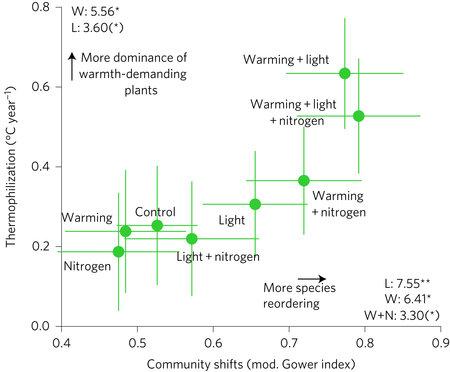New paper out in Nature Plants
We have a new paper out in Nature Plants:
De Frenne P, Rodríguez-Sánchez F, De Schrijver A, Coomes DA, Hermy M, Vangansbeke P & Verheyen K. 2015. Light accelerates plant responses to warming. Nature Plants, 1(9), p.15110.
In a previous paper we reported that temperate forest understories across North America and Europe were changing in response to climate change (a process known as ‘thermophilization’). But the rate of community change has been actually lower than the rate of warming, and we pointed out that increased densification of forest canopies could be lowering actual temperatures within the forest, hence explaining the slow thermophilization of forest understories.
In this new paper, we report results from a full-factorial experiment testing the combined effects of warming, light intensity, and nitrogen on understory communities. We found that low light prevents community changes due to warming. Even in a warmed environment, forest understories will not respond unless there is enough light available so that thermophilous species can thrive.

Hence, with these papers we show that tree shade is preventing thermophilization of forest understories not only through lowering temperatures within forests, but also by casting shade that prevents the most thermophilous, shade-intolerant species to take over these communities.
See also the accompanying commentary by Michael Scherer-Lorenzen, where he points out the important conservation implications of these findings. Considering that ~ 80% of temperate forest biodiversity resides in the understory, the way we manage tree canopies can have dramatic effects on this important component of biodiversity.